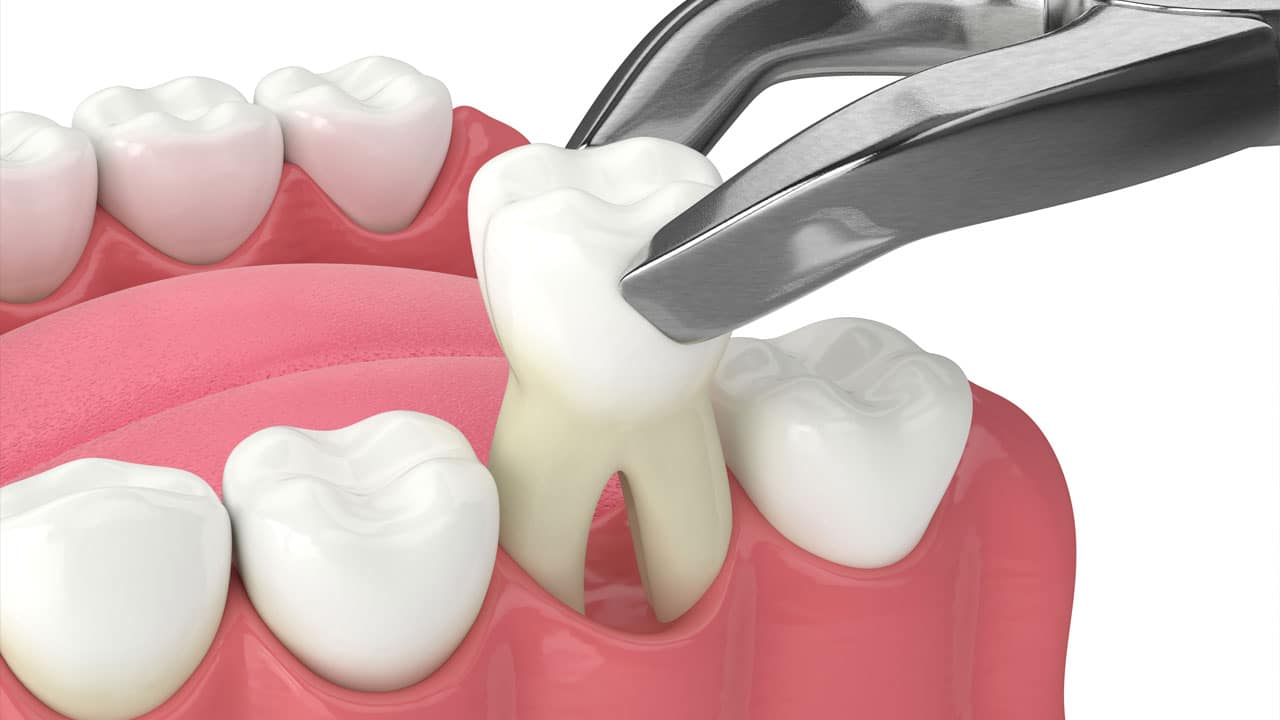
Tooth Extraction
Dental extractions or exodontia involve removal of a tooth from its socket in the jaw bone due to decay, infection, trauma or crowding. Although permanent tooth is meant to last a lifetime, in certain cases it becomes difficult for your dentist to fix it. In such cases an extraction is recommended.
Reasons for tooth extraction
Crowded mouth: In cases where your teeth are too big for your mouth, dentists may extract teeth to properly align them and prepare the mouth for orthodontics. In cases, where the tooth has not erupted through the gum because of not enough space in the mouth, an extraction might be helpful.
Infection: In some cases, infection may spread to the tooth pulp, nerves and blood vessels to such an extent that antibiotics or root canal treatment cannot cure it. In such cases, extraction is done to prevent the spread of infection.
Chemotherapy or Organ transplant: Chemotherapy or organ transplant weakens the immune system thus increasing the chances of a tooth infection that may lead to extraction.
Gum Disease: Periodontal (gum) disease may cause the teeth to get loosened from the gums and may require extraction.
Procedure to remove tooth
There are two types of extraction - a) simple extractions that are performed by general dentists on visible teeth in the mouth with or without sedation and b) surgical extractions performed by dentists or oral surgeons on teeth that are not clearly visible either because they have been broken off or because they have not erupted properly. It requires a surgery and is done either under local or general anesthesia.
To extract an impacted tooth, your dentist would cut the gums and bone tissues surrounding the teeth and grasp the teeth using forceps. It is then loosened from the jaw bone and ligaments that hold it in place by moving to and fro. After pullinng out the teeth, your dentist places gauze into the socket and have you bite down on it to stop bleeding. In some cases stitches are required which are absorbable in ost cases.
Though scalpels and dental drills are used for surgical procedure, nowadays dental lasers and electrosurgery is becoming increasingly popular. Laser uses high energy light beams and electrosurgery uses controlled heat for cutting. They have high precision, faster healing, less bleeding and discomfort and cause less damage to adjacent structures. But it is associated with some disadvantages like high cost, inability to use directly to extract teeth etc.
Dry socket is a complication that is often seen after a tooth extraction. It is caused when the blood clot in the socket has moved or has not formed thus exposing the underlying nerves and bone to food and air. It is a painful condition and is typically seen two to five days after extraction and may cause bad odour or taste.
Before a tooth extraction
Inform your dentist about your complete medical history, the medications you are on and if you have any one of the following conditions:
- Congenital heart defect
- Abnormal or man-made heart valves
- Liver disease
- Artificial joint such as hip replacement
- Impaired immune system
- History of bacteria endocarditis.
Aftercare
Recovery after a tooth extraction may take a few days. To minimize discomfort and pain your dentist may prescribe painkillers. Here are a few tips that may help relieve the pain and help in speedy recovery:
- Avoid rinsing your mouth for 24 hours after the extraction as it may dislodge the clot
- Stick to a liquid diet or eat soft foods such as pudding, yoghurt, soup. Gradually move on to a solid diet after a day or two and use the teeth far away from extraction site for chewing.
- Brush and floss as usual avoiding the extraction site
- After the initial 24 hours, rinse your mouth with warm water in which you have added half teaspoon of salt. This should be done for atleast five days after extraction after meals and before going to bed
- Do not smoke or drink alcohol or sip using a straw atleast for two days after extraction. Do not engage in any strenuous activity such as spitting, vigorous rinsing etc.
Risks
Some of the possible risks involved in tooth extraction is
- Dry Socket which is common in 3%-4% extractions
- Accidental damage such as fracture to nearby teeth
- An incomplete extraction with the tooth root left behind in the jaw
- Jaw fracture due to the pressure applied on the jaw during extraction. Common in older people
- Soreness of the jaw joint or muscles
- In rare cases, long lasting numbness in lower lip and chin
If you are feeling very apprehensive about tooth extraction, then visit us or fix an appointment with our dentists who can remove all your doubts and wipe out all your fears.